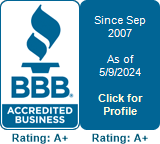.jpg)
As an entrepreneur, you likely have little extra money with which to keep your cash flow and your business running. This fact makes it imperative that you get paid on time and in full as often as possible.
And while you can't control your clients' financial situations, you may be able to ensure that your invoicing doesn't get in the way of prompt payment. Here are six ways to do just that.
1. Don't Clutter
You may find it tempting to be artistic or fun with all your business communications, including invoices. But this practice may not be beneficial when it comes to pointed communications like invoices. Cluttered invoices — featuring graphic designs, wild colors, interesting fonts or unnecessary branding — can get in the way of increasingly computerized accounts-payable processes. Keep it clear, streamlined and easy to scan into computer systems.
2. Give Good Descriptions
When designing line-item descriptions for invoices, keep in mind that what makes sense internally within your organization may be gibberish to outside customers.
Unclear line items or imprecise work descriptions are a quick way to be put on the side burner while the customer's accounting department clarifies what you're billing. The less that an accounts-payable clerk has to check into, the sooner your invoice will be processed and paid.
If possible, use the same wording on invoices that's on your quotations or sales lists. If you're not sure if descriptions are clear, have a layperson read and interpret the items as a test.
3. Check Pricing
Before entering dollar amounts on invoices, double-check for relevant quotations, estimates or special pricing offers and discounts. If you have more than one person selling goods or services, it's easy to end up with different prices for different jobs or customers. Any billing that doesn't match customers' expectations will likely be delayed, so resolve potential roadblocks in person before the invoice is issued.
4. Offer Payment Options
The more options that customers have for paying, the more likely you are to see money quickly. Gone are the days of expecting everyone to use only a check or cash. Instead, a variety of payment methods —such as electronic funds transfers, wire transfers, mobile payments, online payment platforms and credit cards — are standard.
Even though it may take some effort or a little expense to set up some of these options, it will mean faster payment by busy customers.
5. Use Invoice Numbers
You can't be paid consistently if you don't know who owes what. Using a simple system of numbered invoices is an easy way to ensure you can keep track of open invoices. Avoid any temptation to bill in bulk, such as only using statements, as this can lead to imprecise accounts-receivable aging reports and confusion between you and your clients.
6. Know Your Contacts
The more direct the route your invoice takes, the sooner it can be put in line for payment. So be sure you know exactly what address to use for billings and whom you can speak with about any questions regarding payment. Sending invoices to sales departments, managers or general mail boxes may cause delays. Ask what the payment process is within each customer's organization.
When setting up a new account with a new customer, clarify accounts-payable information up front. And ask about faster electronic-invoicing options, such as email and text. Make sure the customer has everything they need, such as your EIN or account number, to process payment.
By creating a more functional invoice and having a system in place to follow up on it, you can improve the chances of prompt and complete payment every time. If you need help determining how to improve your invoice flow, talk with the accounting experts at Quality Bookkeeping Services, Inc.
, today.













